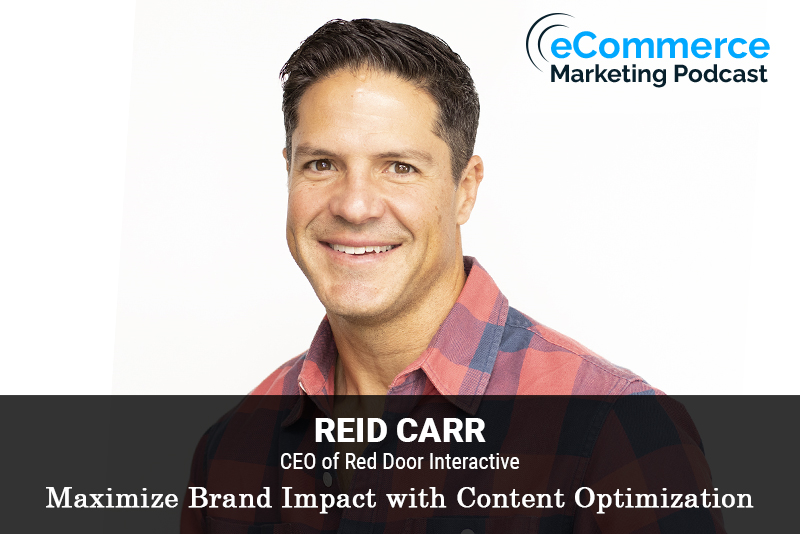
The eCommerce Marketing Podcast walks you through everything that goes into ecommerce marketing — from inbound marketing to paid advertising to conversions. Learn the strategies top marketing experts use to grow their businesses.
With over 25 years of marketing experience, Reid Carr built Red Door Interactive to be a fiercely independent, nationally renowned, full-funnel marketing agency. RDI was founded to help enterprise clients fuse brand with performance marketing to help them break through creatively and grow market share. With decades of experience in strategy development and brand and performance marketing, Carr specializes in standout creative optimized by a data-driven, full-funnel, multi-channel approach to drive meaningful results.
In this episode, you will learn
The concept of digital content optimization and why it’s important for ecommerce businesses
How does digital content optimization differ from traditional SEO techniques, and how does it contribute to increased brand visibility
What are some key elements that ecommerce marketers should focus on when optimizing their digital content for increased brand visibility
How can ecommerce businesses leverage different types of digital content, such as blog posts, product descriptions, and multimedia, to improve their brand visibility
What role does keyword research play in digital content optimization, and how can ecommerce businesses identify the most effective keywords for their niche
Case studies and success stories where digital content optimization played a significant role in improving an ecommerce business’s brand visibility and sales
For show transcript and past guests, please visit https://www.ecommercemarketingpodcast.com
Or on YouTube at:
https://www.youtube.com/channel/UC3PgT0NOGzpdPGQtBK0XLIQ
Follow Arlen:
Twitter: https://twitter.com/askarlen
Facebook: https://www.facebook.com/arlen.robinson.7
Instagram: https://www.instagram.com/arlenyohance/
LinkedIn: https://www.linkedin.com/in/arlenrobinson/
Past guests on the ecommerce marketing podcast include Neil Patel, Nemo Chu, Luke Lintz, Luke Carthy, Amber Armstrong, Kris Ruby and many more.
Thanks for listening. Be sure to subscribe and leave a review.

Title: Enhancing Brand Visibility Through Digital Content Optimization with Reid Carr
Guest: Reid Carr, Founder and CEO of Red Door Interactive
Host: Arlen Robinson
In this episode of the eCommerce Marketing Podcast, Arlen Robinson interviews Reid Carr, the founder and CEO of Red Door Interactive, a full-funnel marketing agency. With over 25 years of marketing experience, Reid shares insights on digital content optimization and its significance for increasing brand visibility in the e-commerce space.
Key Takeaways:
- [2:30] Reid Carr’s Background:
- Journey from advertising at TBWA Chiat/Day to founding Red Door Interactive.
- Importance of integrating data-driven insights with creative marketing.
- [7:15] Digital Content Optimization:
- The concept and importance of digital content optimization for e-commerce businesses.
- The role of storytelling in building a brand narrative and customer engagement.
- [14:00] Differences from Traditional SEO:
- How digital content optimization differs from traditional SEO techniques.
- The importance of understanding customer needs and behaviors.
- [18:00] Leveraging Different Types of Content:
- Utilizing various digital content forms (blogs, product descriptions, multimedia) to improve brand visibility.
- Crafting content that resonates with the audience and addresses their needs at different stages of the customer journey.
- [25:00] Role of Keyword Research:
- The role of keyword research in digital content optimization.
- Identifying effective keywords for niche markets and long-tail keywords for competitive industries.
- [32:00] Case Study – ASICS:
- Successful digital content optimization campaign for ASICS.
- Creation of supination and pronation guides that significantly increased website traffic and sales.
Guest Info:
- Reid Carr
- CEO & Executive Creative Director at Red Door Interactive
- LinkedIn: Reid Carr
- Website: Red Door Interactive











